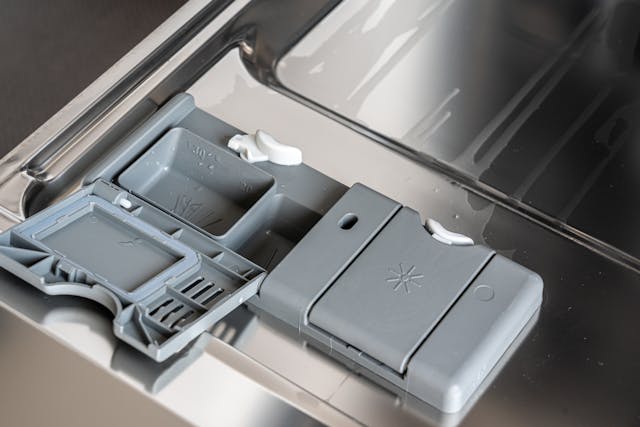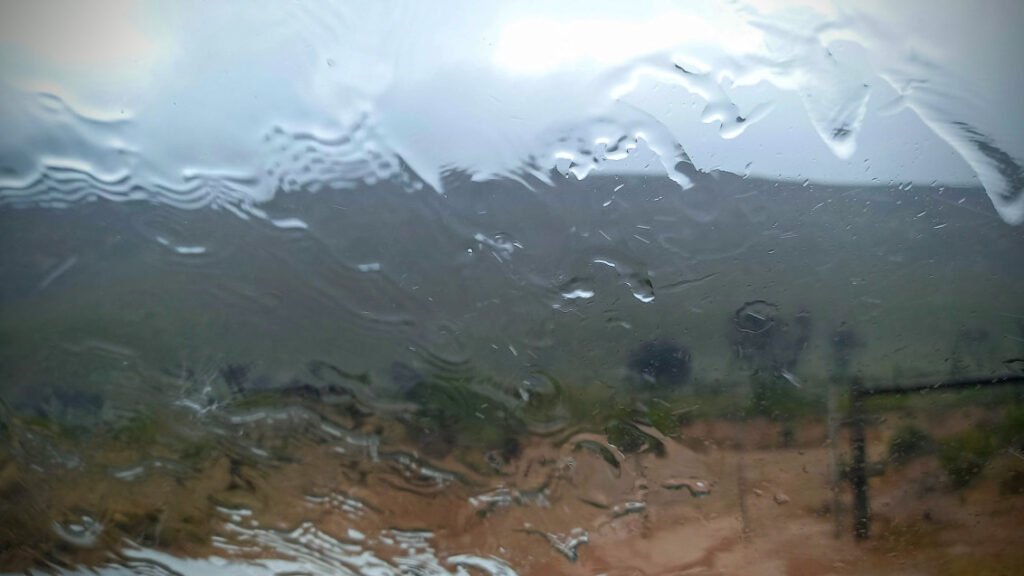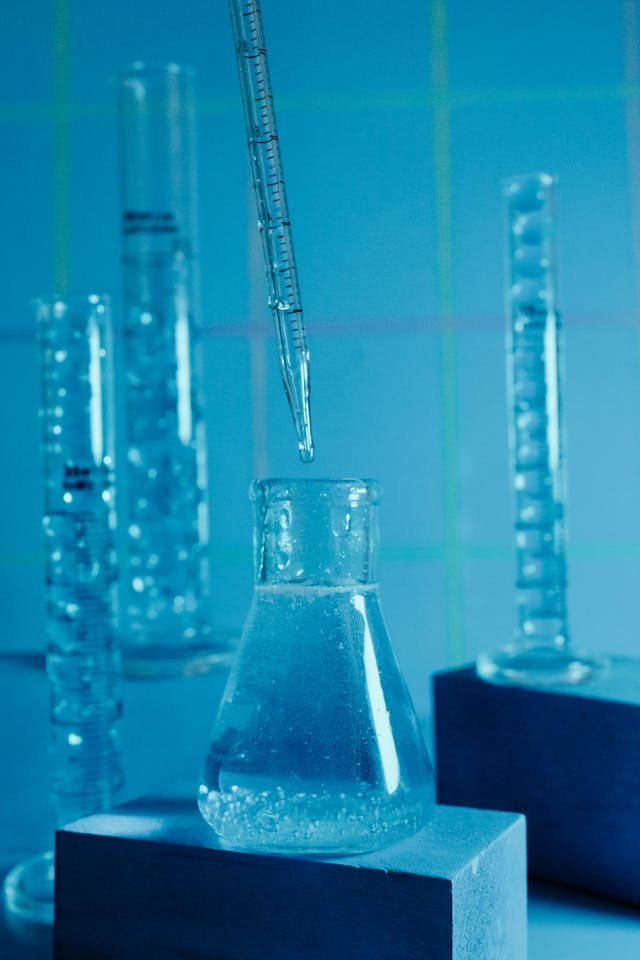After months of staring at my once-shiny dishes coming out of the dishwasher with a hard, white film, I had to dig deeper. A water test revealed some interesting findings from my well water. Total dissolved solids (TDS) at a whopping 2050 mg/L (well above the 1200 mg/L limit), a chloride level that nearly made me double-check I wasn’t washing with seawater, and yet—oddly enough—low calcium and magnesium. Despite the low calcium levels, which usually cause limescale, I was still faced with the chalky residue on everything from plates to irrigation equipment. So, what’s going on here?

Before we dive deeper, let’s discuss why we opt for a dishwasher over handwashing. Dishwashers save both water and time (a big one for us), plus ours is powered by solar energy—making it an efficient and eco-friendlier choice. Our tabletop dishwasher uses less than 8 liters for a full cycle, a feat that’s hard to achieve with manual washing and rinsing. With that settled, let’s continue…
The White Film Mystery: Months of Frustration and Confusion
After endless research, multiple dishwasher salt refills, and about half a gallon of vinegar poured through my machine, I’m still here scratching my head. The dishwasher keeps doing its thing—leaving me with white film, not clean dishes. This is where the frustration sets in. The TDS and chloride levels suggest mineral saturation, meaning minerals are sneaking out and causing all kinds of problems, even without high calcium levels. Cue the head-scratching: how is there scaling when the water test says calcium isn’t the main culprit? That’s when I started looking into solutions: the household remedies like vinegar and citric acid.
Vinegar vs. Citric Acid: The Dishwasher Duel
So, can pouring a cup of vinegar into your dishwasher fix it? Yes… and no. Vinegar does help dissolve some mineral build-up, but it’s far from a long-term solution. Not only is it financially unsustainable to keep pouring vinegar down the drain, but the acidity can harm soil if the greywater goes into your irrigation system. Vinegar in large doses can throw your soil’s pH off balance, making it bad for plants in the long run.
Citric acid, on the other hand, is a milder alternative that gets the job done more effectively. To dose citric acid correctly, I’ve learned that you need around 1 gram per liter of water for 10 ppm and 5 grams per liter for 50 ppm. This can be added to your dishwasher or even your water storage tanks to help prevent buildup. The beauty of citric acid is that it’s far safer for soil and breaks down naturally, making it a more eco-friendly solution when compared to vinegar.
Environmental Safety: Keeping Your Soil Happy
Speaking of the environment, citric acid wins this battle hands-down. Unlike vinegar, which can lower soil pH when overused, citric acid doesn’t harm soil when used in reasonable quantities. It’s naturally occurring in many fruits and breaks down easily, so you can rest easy knowing that your plants won’t suffer from chemical residue. That said, whichever solution you choose, you should monitor your soil’s pH regularly—especially if your greywater ends up there. Simple pH test strips can give you a rough idea of whether your efforts are helping or harming the ground beneath your feet.

The Rainwater Solution: Nature’s Perfect Gift
The most effective way to avoid all these headaches? Rainwater. Clean, soft, and free from all the minerals that plague well water, rainwater is the ideal solution for dishwashing, irrigation, and pretty much everything else. Rainwater harvesting should be a no-brainer for anyone living in an area with high TDS water. The lack of minerals means no scaling, no white residue, and no frustrating dishwasher woes. Invest in rainwater harvesting, even if it’s a simple setup. Trust me—your appliances and your sanity will thank you.
Conclusion: Think, Measure, and Prevent

Before you go dumping chemicals into your dishwasher or storage tanks, make sure you know what you’re dealing with. Is it calcium carbonate causing your issues, or something else? Be scientific about it—run the tests, observe the buildup, and act logically. With a bit of planning, you can prevent serious damage to your appliances, plumbing, and soil. Don’t wait until the scale has choked the life out of everything—start taking action now, even if it’s just monitoring your water regularly. Trust me, future-you will thank you.
